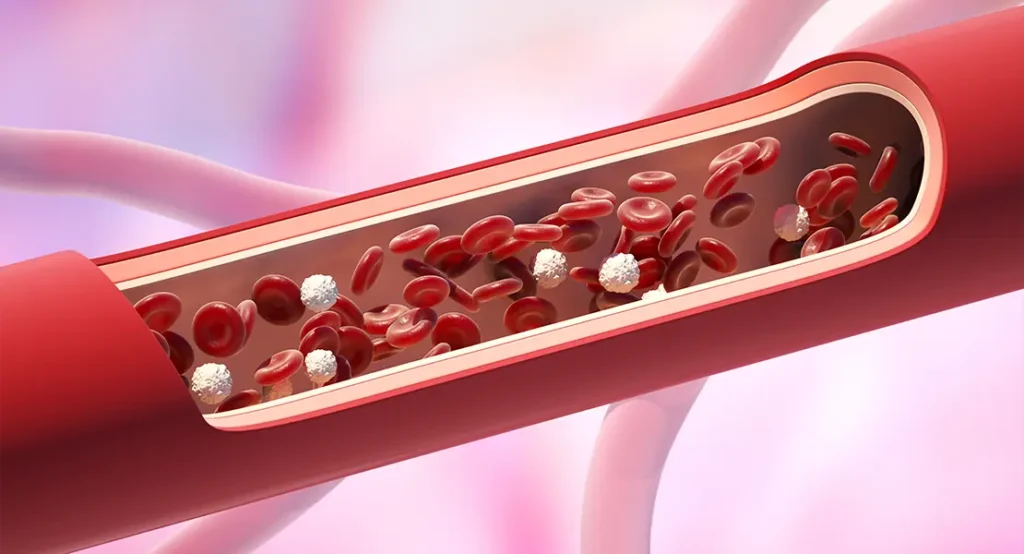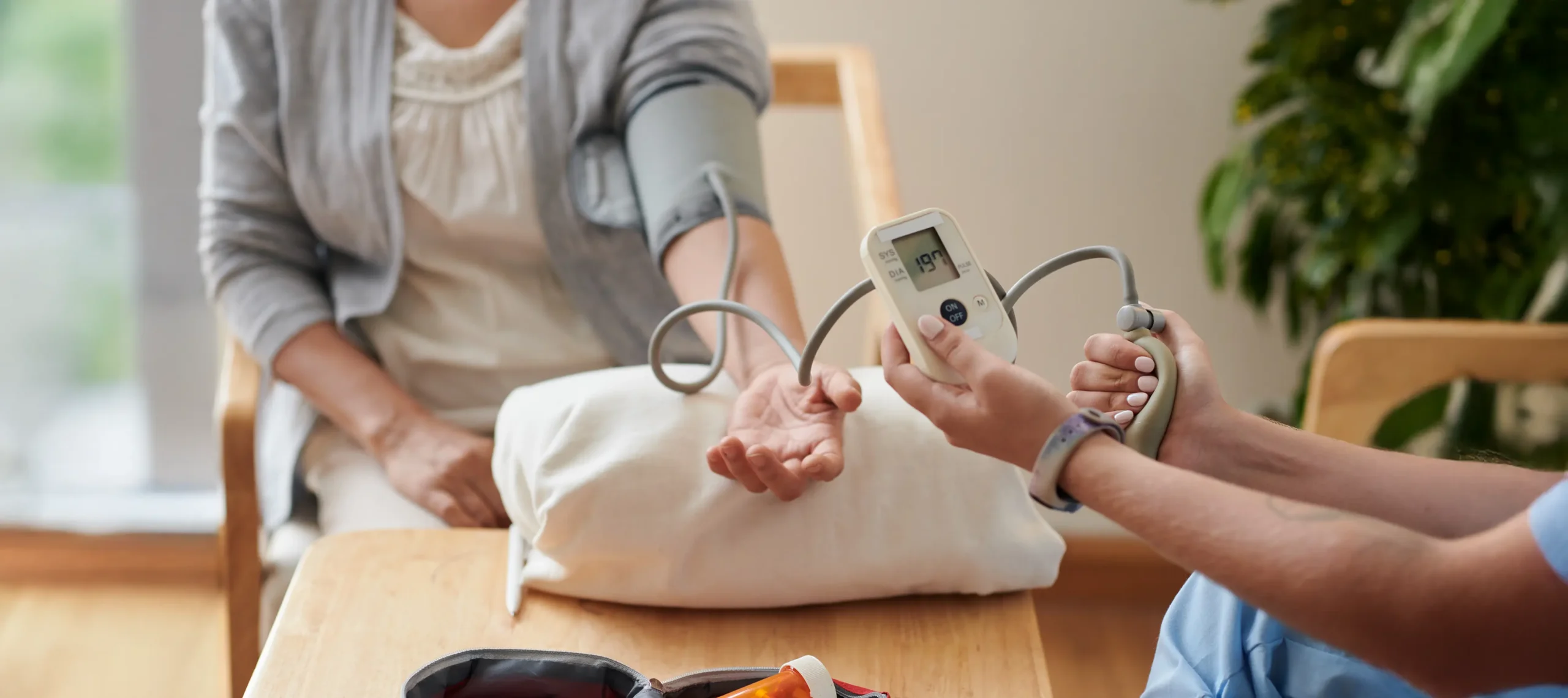High blood pressure, or hypertension, is a long-term health condition that quietly damages many parts of the body if left untreated. One of the lesser-known effects is its impact on eye health, particularly its ability to contribute to the development of cataracts. Cataracts, which cloud the eye’s natural lens, can significantly impair vision and reduce quality of life. Understanding how blood pressure influences eye health, and what steps you can take to prevent problems, is key to protecting your sight.
What Are Cataracts?
Cataracts occur when the lens of the eye becomes cloudy or opaque. This cloudiness prevents light from being focused properly on the retina, leading to blurred or dimmed vision. The condition is progressive and often develops slowly over many years, though in some cases it can appear more rapidly.
Common symptoms of cataracts:
- Blurry or hazy vision
This often feels like looking through frosted or smeared glass, making it harder to read, watch TV or recognise faces clearly. - Increased sensitivity to light or glare
Bright lights or sunlight may cause discomfort, and glare from headlights at night can become increasingly difficult to tolerate. - Difficulty seeing at night
As less light reaches the retina, seeing in dim environments becomes more challenging, often affecting driving and outdoor activities after dark. - Fading or yellowing of colours
Colours may appear dull or tinted, which affects contrast and makes distinguishing between similar shades more difficult. - Frequent changes in prescription glasses
If your glasses need constant updating but your vision remains unsatisfactory, cataracts may be interfering with how clearly you can see.
How Cataracts are Diagnosed:
- Eye examination
A slit lamp is used to examine the lens and detect any signs of cloudiness, even in early stages. - Visual acuity test
A chart-based assessment determines how well you can see at a distance, often highlighting subtle vision loss due to cataracts. - Dilated eye test
Drops are used to widen the pupil, allowing a full view of the lens and retina to confirm the presence and extent of cataract formation.
How High Blood Pressure Contributes to Cataract Formation
High blood pressure affects the fine balance of nutrients, oxygen, and fluid in the eye, particularly around the lens, increasing the risk of damage over time. The lens itself doesn’t have a direct blood supply, so it relies on the surrounding fluid and support structures to remain clear and functional. When blood pressure is consistently high, this delicate system becomes disrupted, paving the way for degenerative changes that can lead to cataract formation. One of the key mechanisms through which this happens is oxidative stress.

1. Oxidative Stress
- High blood pressure increases the production of free radicals
Free radicals are highly reactive molecules that can damage cells by interfering with normal biochemical processes. In people with high blood pressure, the body tends to produce these molecules in excess, particularly as a result of vascular strain and inflammation. This is not limited to major organs like the heart or kidneys—delicate tissues such as those in the eye are also vulnerable. As these free radicals circulate and accumulate in the eye, they begin to disrupt the environment needed to maintain a healthy, transparent lens.
Within the lens, the natural defences against oxidative stress—such as enzymes and antioxidant compounds—can become overwhelmed when free radicals are continuously present. This imbalance shifts the internal environment of the lens from one of protection to one of damage. As a result, the structural integrity of lens cells begins to break down, particularly in the lens fibres that are responsible for refracting light properly.
Moreover, the production of free radicals is often worsened by lifestyle factors commonly associated with hypertension, such as smoking, poor diet, and physical inactivity. These habits further deplete the body’s antioxidant reserves, compounding the damage. In the long term, the persistent oxidative stress caused by high blood pressure can erode the lens’s natural clarity and lay the groundwork for cataract development. - These unstable molecules damage lens proteins, causing them to clump and cloud
The lens is composed largely of tightly arranged proteins called crystallins, which are responsible for maintaining its transparency and light-refraction properties. When free radicals attack these proteins, they become structurally altered. Their once-clear, precise alignment begins to unravel, leading to a process known as protein aggregation. This aggregation is the first visible sign of cataract formation, as it causes scattered light and blurred vision.
As these altered proteins accumulate, they form clusters that disrupt the even distribution of light passing through the lens. This creates visual disturbances, often described by patients as cloudiness, glare, or haloes around lights. Unlike temporary changes in vision that may come and go, this protein clumping is typically permanent unless treated surgically. The clarity of the lens diminishes gradually, and the degree of visual disruption often correlates with how long and how severely the hypertension has gone unmanaged.
In the early stages, this damage may not be noticeable, especially if only a small portion of the lens is affected. However, as protein clumping progresses, the clouding becomes denser and more widespread. At this point, corrective lenses offer little help, as the problem lies within the structure of the lens itself. This is why controlling blood pressure early on is so vital—it prevents the cumulative damage that eventually leads to these irreversible changes. - Over time, this oxidative damage accumulates, leading to lens opacity
Unlike other tissues in the body that can regenerate, the lens does not shed damaged cells or proteins. Instead, the effects of injury—such as oxidative stress—accumulate over time. When free radicals repeatedly attack the lens and its support systems, the damage becomes layered, leading to increasing levels of opacity. This is not a sudden process but one that unfolds gradually, often over years, and is heavily influenced by how well blood pressure is controlled during that time.
Each exposure to oxidative stress, even if minor, contributes a small amount of wear and tear to the lens. Initially, the body may be able to repair or contain this damage. But as high blood pressure continues to drive free radical production, the repair mechanisms falter. The proteins in the lens continue to degrade and lose their function, making the lens progressively more cloudy. Eventually, this leads to a full-blown cataract that impairs daily functioning.
It’s also worth noting that this process may be accelerated in individuals with other health issues such as diabetes or in those who take certain medications that influence oxidative balance. When compounded with hypertension, these risk factors increase the speed at which lens opacity develops. For this reason, patients with high blood pressure are advised to undergo regular eye examinations, even in the absence of symptoms, to monitor for early signs of cataract formation and intervene as needed.
2. Inflammation and Vascular Damage

- Chronic hypertension causes inflammation in blood vessels, including those near the eyes
When high blood pressure persists over time, it places considerable strain on the walls of blood vessels throughout the body, including the delicate microvascular networks in and around the eyes. This constant pressure can cause the endothelial lining of the vessels to become irritated and inflamed. In response, the body releases inflammatory mediators, which contribute to swelling, vascular stiffness, and even microscopic damage to the blood vessel walls. In the eye, such changes compromise the integrity of vessels that support critical structures like the retina and the lens capsule. This inflammation doesn’t simply remain local—it sets off a chain reaction that affects neighbouring tissues. As the vessels stiffen or become obstructed, the flow of nutrients and oxygen becomes less efficient. In tissues like the lens, which rely on the surrounding ocular fluid for nourishment, any disturbance in vascular function can have far-reaching consequences. The inflammation also increases vascular permeability, allowing unwanted substances to leak into the surrounding areas, disrupting the delicate biochemical environment the eye depends on.
Long-term inflammation may also alter the eye’s internal pressure and fluid dynamics. The eye relies on a stable internal environment to function optimally, and inflammation can interfere with that balance. This interference contributes not only to cataract formation but also raises the risk of developing other hypertensive eye conditions such as hypertensive retinopathy and even glaucoma. It underscores how systemic conditions like high blood pressure can have very local, very serious consequences for ocular health. - This reduces oxygen and nutrient delivery to the lens
The lens is avascular—it has no direct blood supply of its own—which makes it highly dependent on its surrounding structures for the nutrients and oxygen it needs to remain healthy and transparent. When hypertension leads to inflammation and constriction of nearby vessels, the diffusion of oxygen and nutrients into the lens capsule is compromised. Over time, this shortage of essential components begins to affect the biochemical stability of the lens tissue, setting the stage for degeneration and opacity.
This nutrient and oxygen deficiency means that lens cells are unable to perform basic functions such as protein synthesis, ion balance regulation, and antioxidant defence. As these processes become impaired, the lens is less able to resist damage from environmental stressors and metabolic waste. Small imbalances in sodium, calcium, or glucose levels—normally corrected by the lens’s internal systems—can now go unchecked, creating further cellular stress and promoting the early aggregation of lens proteins.
The consequences of sustained undernourishment are gradual but cumulative. Even minor disruptions in lens metabolism can have long-term effects due to the lens’s inability to regenerate or replace damaged fibres. The reduced availability of energy and nutrients slows the turnover and repair of lens cells, accelerating the stiffening and yellowing of the lens typically associated with cataracts. Thus, even in the absence of direct trauma or disease in the eye, systemic vascular dysfunction from high blood pressure can have profound effects on lens clarity. - The lens deteriorates more rapidly without the proper nourishment
Once the supply of oxygen and nutrients is disrupted, the lens begins to lose its natural resilience. The tightly packed lens fibres, which are essential for maintaining optical clarity, become increasingly vulnerable to degradation. These fibres are meant to remain transparent and flexible throughout a person’s life, but when deprived of what they need, they start to break down. The once-organised arrangement becomes disordered, leading to scattering of light and progressive clouding of vision.
As the lens deteriorates, it also becomes less flexible, making it harder for the eye to adjust focus—particularly for near objects. This hardening, known as lens sclerosis, contributes not only to cataract formation but also to presbyopia. The dual impact on vision often goes unnoticed until it becomes advanced. Unfortunately, by the time these changes are noticed, much of the damage is irreversible, reinforcing the importance of early blood pressure control to preserve ocular health.
Moreover, inadequate nourishment limits the lens’s ability to defend itself against oxidative stress and other internal threats. Antioxidant enzymes, such as glutathione, are vital for neutralising free radicals in the lens. But when the metabolic activity within the lens declines due to poor nutrient delivery, these protective systems are diminished. Without them, lens proteins become oxidised, clump together, and form opacities—hallmarks of cataract development. This process highlights how essential a well-functioning vascular system is, even for tissues that aren’t directly supplied by blood vessels.
3. Medication Side Effects
- Some blood pressure medications, especially thiazide diuretics, may slightly raise the risk of cataracts
Thiazide diuretics are commonly prescribed to manage high blood pressure by helping the body eliminate excess salt and water through urine. While they are generally effective and well tolerated, long-term use may have unintended consequences for the eyes. Studies have suggested a modest association between prolonged use of thiazide diuretics and an increased risk of developing cataracts. Though this link is still being studied, the concern stems from the way these medications affect fluid and electrolyte balance throughout the body.
One possible explanation for this association is that thiazide diuretics may contribute to dehydration at the cellular level, particularly in tissues that rely on precise fluid balance, like the lens. The lens requires a stable internal environment to remain transparent. If systemic fluid levels become imbalanced, it could disturb the lens’s natural structure and function. Over time, this disturbance may lead to microstructural changes in the lens, promoting the clumping of proteins and cloudiness typical of cataracts.
Additionally, thiazides can alter calcium levels in the body, which may have implications for the eye. The lens needs a tightly regulated calcium environment to maintain transparency. Fluctuations in calcium due to medication could interfere with cellular processes and enzyme activity inside the lens, contributing to its deterioration. While this risk is small and does not outweigh the benefits of controlling blood pressure, it is something to be aware of—particularly in patients who are already at higher risk of cataracts due to age, diabetes, or a family history. - These drugs can influence electrolyte balance and hydration, indirectly affecting the lens: Diuretics work by promoting the excretion of electrolytes such as sodium, potassium, and magnesium. These minerals play vital roles in the body’s electrical and biochemical systems, including those within the eye. The lens relies on a delicate ionic environment to regulate hydration, protein arrangement, and enzyme activity. Disrupting this balance can make the lens more susceptible to stress, oxidation, and eventually cataract formation.
If electrolyte levels fall too low, lens cells may struggle to maintain osmotic equilibrium, which controls the flow of water in and out of the lens. This can lead to cellular swelling, shrinking, or irregular water retention—all of which disturb the finely tuned optical properties of the lens. Over time, these microscopic changes accumulate and become visible as opacity or distortion in the lens.
Hydration status also plays a critical role in maintaining lens transparency. Even mild, chronic dehydration can reduce the eye’s ability to flush out waste products or deliver antioxidants effectively. In the context of diuretic use, this means that the lens is left vulnerable not only to physical structural changes but also to chemical imbalances that promote protein aggregation. Therefore, while these medications are essential for controlling blood pressure, monitoring hydration and electrolyte levels is crucial for patients who are on them long-term.
Managing Blood Pressure to Prevent Cataracts
Taking control of your blood pressure is not only vital for your heart, but also plays an essential role in protecting your eyesight from cataracts.
Reduce salt intake
- Aim for less than 6g of salt per day
Lowering salt helps reduce fluid retention and ease strain on blood vessels, improving circulation throughout the body, including the eyes. - Avoid processed foods and ready meals, which often contain hidden sodium
These often contain more salt than expected, contributing to elevated blood pressure even if you don’t use table salt.
Eat a balanced, nutrient-rich diet
- Include leafy greens, whole grains, oily fish, and colourful vegetables
These foods supply antioxidants, healthy fats, and essential vitamins that maintain vascular and lens health. - Berries, citrus fruits, and nuts offer strong antioxidant protection
These help neutralise free radicals that contribute to lens protein breakdown, slowing the onset of cataracts.

Exercise regularly
- Target 30 minutes of moderate activity at least 5 days a week
Physical activity lowers blood pressure by improving heart function and reducing arterial stiffness. - Exercise improves circulation and stabilises blood pressure long-term
Better circulation supports the delivery of oxygen and nutrients to sensitive tissues such as the lens.
Maintain a healthy weight
- Excess body weight increases pressure on the circulatory system
This added strain can worsen hypertension and raise the risk of cataract development by reducing ocular perfusion. - Even small reductions in weight can lead to significant improvements
Losing 5–10% of body weight often produces measurable drops in blood pressure and improved metabolic health.
Avoid smoking
- Smoking contributes to both high blood pressure and cataract formation
The chemicals in cigarettes damage blood vessels and promote oxidative stress, accelerating lens damage. - Support is available to help you quit successfully
With professional support, nicotine therapy, or digital tools, most people can successfully stop smoking and improve their eye and vascular health.
Limit alcohol
- Stick to no more than 14 units per week, spread over several days
Excessive drinking raises blood pressure and can interfere with nutrient absorption and eye health. - Alcohol can also interfere with blood pressure medications
It may reduce their effectiveness or increase side effects, undermining efforts to keep blood pressure in check.
Monitor your blood pressure regularly
- Check at home or during routine GP visits
Regular monitoring ensures any rises are caught early and can help track the effects of treatment or lifestyle changes. - Most adults should aim for a reading below 130/80 mmHg
Staying within this range helps protect the eyes from vascular damage and keeps cataract risk lower.
Take medications as prescribed
- Never skip doses or alter your medication without consulting your GP
Inconsistent medication use allows blood pressure to fluctuate, which can increase the strain on delicate eye tissues. - Inform your doctor about any side effects, including vision changes
Noticing changes early allows your doctor to adjust your treatment before long-term damage sets in.
What If Cataracts Have Already Progressed?
When cataracts begin to interfere with your quality of life, surgery is usually the most effective option.
When to seek treatment:
- Vision is affecting your daily activities, such as reading or driving
If cataracts make it difficult to complete everyday tasks safely and comfortably, surgery should be considered. - Frequent prescription changes no longer improve your vision
When new glasses no longer make a difference, it’s likely that cataracts are the main cause of reduced clarity.
The cataract surgery process:
- The cloudy lens is removed and replaced with an artificial one
This artificial lens remains permanently in place and restores clarity by properly focusing light on the retina. - Most patients notice an improvement in vision within a few days
The healing process is typically quick, and vision becomes noticeably sharper within the first week.
Aftercare advice:
- Use prescribed eye drops to prevent infection and reduce inflammation
These drops are vital for healing and help prevent complications during the recovery period. - Avoid rubbing your eye, heavy lifting, or getting water into the eye
Being cautious in the first few weeks supports proper healing and reduces the risk of irritation or infection. - Attend all follow-up appointments
These visits allow your specialist to ensure that healing is on track and that the lens implant is functioning correctly.
Final Thoughts
High blood pressure doesn’t just affect your heart and kidneys — it can also damage your vision by increasing the risk of cataracts. Through oxidative stress, inflammation, and reduced nutrient delivery to the eye, prolonged hypertension sets the stage for lens deterioration. Fortunately, by managing your blood pressure with lifestyle changes, routine monitoring, and appropriate medication, you can significantly lower your risk. If cataracts do progress, safe and effective surgical treatment is available. Staying proactive about both your cardiovascular and eye health is the best way to preserve your vision and overall quality of life.
If you’re concerned about cataracts or would like to have your eyes thoroughly assessed, you can contact us at the London Cataract Centre to book a consultation with one of our expert ophthalmologists. We’re here to guide you through every step of diagnosis, treatment, and recovery.

